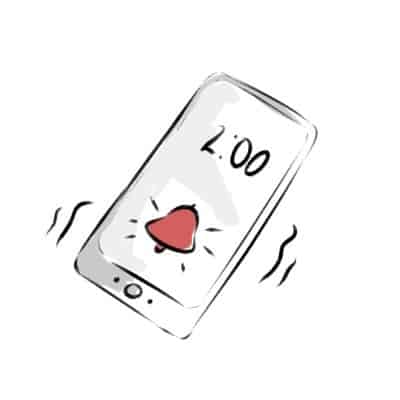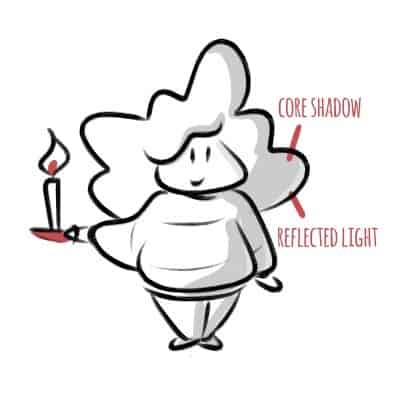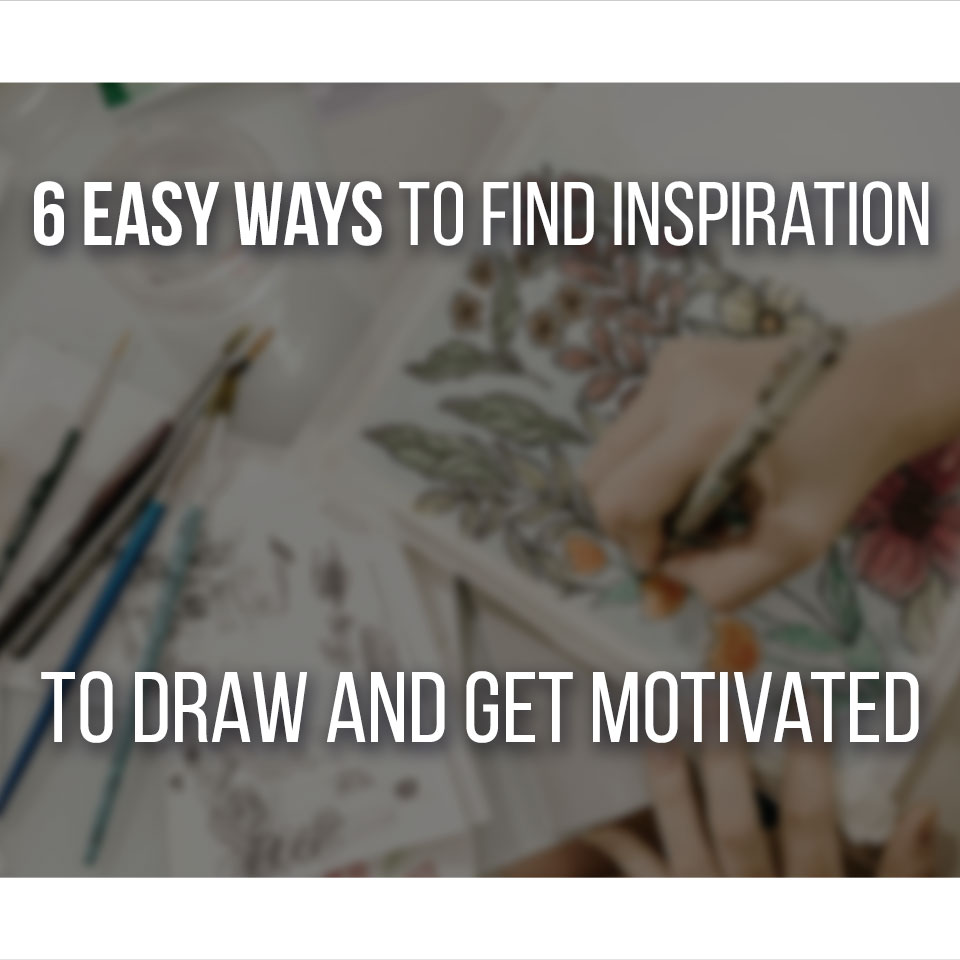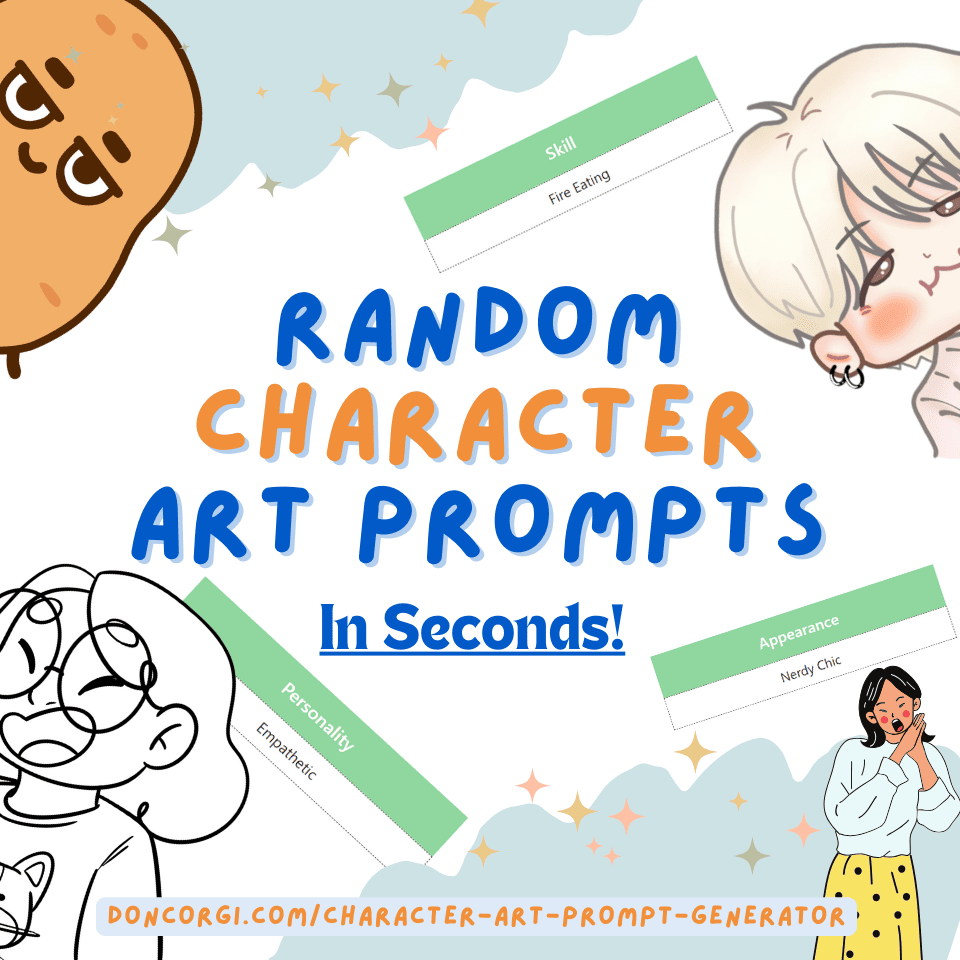Are you someone who is in awe of talented artists but feels frustrated with your own drawing skills?
Well, fear not!
Becoming good at drawing is actually more achievable than you might think.
You just need to follow these easy tips to get good at drawing.
Let’s dive right in and start honing your drawing skills.
Table Of Contents
Make Practicing A (Fun) Habit

I’ve been involved in drawing for quite some time, and I strongly believe that making it a fun habit is the key to staying motivated.
You can do this by mainly:
- Drawing Fun Themes & Characters
- Scheduling Time To Draw
- Carrying A Sketchbook (Always!)
Let’s go into these in more detail.
Draw Fun Themes & Characters

I strongly believe that making practicing drawing fun is the key to improving your skills.
One way to do this is by exploring different themes and characters that capture your imagination.
Whether creating fun and unique characters or immersing yourself in themes like fantasy, sci-fi, or everyday life, there’s a whole world of inspiration waiting for you.
From my perspective, by practicing drawing these fun themes and characters, you enhance your technical skills and ignite your passion for art.
It’s like embarking on a personal adventure whenever you pick up your sketchbook.
You have the power to create anything you can imagine.
The possibilities are endless, whether it’s a fun creature or a futuristic cityscape.
Schedule Time To Draw

I strongly believe that establishing a regular schedule for drawing is crucial as you continue to explore different themes and characters in your artistic journey.
From my perspective, setting aside dedicated time for drawing helps improve your skills and makes it a fun and enjoyable habit.
In my experience, regular practice plays a significant role in developing muscle memory and sharpening observation skills.
By consistently putting pen to paper or brush to canvas, you allow yourself to become more comfortable with different techniques and styles. It’s like any other skill – the more you practice, the better you get.
The same goes for digital art! Schedule time to start drawing on your tablet or standalone tablet.
So, why not make it a priority to schedule time to draw?
Finding a routine that works for you is key, whether it’s a few minutes every day or a longer session once a week.
It can be a special moment of solace and creativity in your day, where you can immerse yourself in the world of art.
And remember, there are no strict rules when it comes to scheduling your drawing time.
You can schedule a daily drawing practice, weekly, or whatever suits you best!
It’s all about finding what works best for you.
Maybe you’re a morning person and prefer to start your day with a sketch, or perhaps you find inspiration strikes you in the evening. It is important to carve out that dedicated time and stick to it.
Always Carry A Sketchbook With You

I strongly believe that always carrying a sketchbook with you is essential.
In my experience, it enhances your drawing skills and makes practicing art a fun and fulfilling part of your daily life.
From my perspective, having a sketchbook allows you to capture ideas, observe the world around you, and document your artistic journey. This is great to also quickly sketch ideas and learn from real life.
This way, you’ll never miss an opportunity to create and improve.
It becomes a constant companion, inspiring innovation and fostering creativity.
You’ll also keep your motor skills tuned since you’ll be drawing more often, helping you draw better in the longterm.
Experiment With Your Artwork

I strongly believe that once you have established a regular drawing routine, it’s important to start experimenting with your artwork.
This is where the fun really begins when you start drawing!
Experiment with different mediums & art styles until you find something you like above all else.
And even then, experimenting is a fun way to keep yourself motivated to draw and keep on creating.
Try Different Mediums

I believe one of the best ways to enhance your artistic abilities is to try different art mediums.
Experimenting with various artistic mediums adds variety to your artwork and allows you to explore different techniques and styles.
Each medium offers its own unique challenges and opportunities to learn.
From my perspective, it seems to me that practicing drawing the same thing using pencil, charcoal, watercolors, or even digital mediums can truly expand your artistic horizons.
So, why not give it a try? I’ve been involved in various artistic endeavors, and I can say that trying different mediums has always been a valuable and rewarding experience.
Don’t be afraid to step out of your comfort zone and embrace the unknown.
Experiment With Different Art Styles
Experimenting with different art styles is a fantastic way to broaden your artistic horizons and find your own art style.
From my perspective, exploring various drawing styles allows you to step outside of your comfort zone and discover fresh creative possibilities.
You can draw inspiration from various artists’ works and try your hand at different art styles like Chibi Style, Anime Styles, or Old Cartoon Styles.
By doing so, you not only enhance your skills but also infuse your artwork with a unique flair.
In my experience, this kind of experimentation can be incredibly rewarding and actually very fun, especially when you enjoy drawing and learning.
Don’t Forget Art Fundamentals
To become a skilled and better artist, it’s really important not to overlook the significance of art fundamentals.
Learning the basic shapes will give you a strong foundation to build upon.
This will allow you to represent objects and figures in your artwork accurately.
Practicing shading techniques to add depth and dimension to your drawings is also crucial.
Mastering perspective is another key skill to help you create realistic and convincing compositions.
By honing these fundamental skills, you’ll learn how to draw and get better at it much faster.
Learn The Basic Shapes

Understanding and utilizing basic shapes is fundamental for artists!
These simple shapes, like circles, squares, triangles, and rectangles, may seem simple, but they’re the building blocks of every intricate masterpiece.
By understanding how these shapes interact and intersect, you can create more complex forms step by step.
It seems to me that by starting with these basic shapes, using simple curves and straight lines, you can easily break down complex objects into simpler components.
For example, a flower can be represented as a circle for the center and petals as triangles or ovals.
By breaking down objects this way, you can simplify the drawing process and make it more manageable.
Practice Shading

When you’re working on improving your drawing skills, I think it’s really important to focus on practicing shading.
Shading is one of the key principles of art that can really improve your drawings.
Learning how to effectively use light and shadow can be hard to master, though; this is why I’ve created this Complete Shading Guide for you.
It adds depth and dimension to your art, making them look more realistic and visually appealing.
Master Perspective
Understanding perspective is crucial for mastering the fundamentals of art.
Understanding how to create the illusion of depth and dimension on a flat surface is key to mastering perspective.
Learning perspective allows you to accurately represent objects and scenes, ensuring proper proportion and creating a sense of realism.
This skill is great for those who want to improve their drawing skills, especially when drawing environments and working on different compositions.
From my perspective (pun intended), by mastering perspective, you can bring innovation to your artwork.
Pushing the boundaries of what’s possible and captivating your audience with your unique vision.
You can learn more about the Different Types Of Perspective here!
Just follow that drawing tutorial and the links there, it’s a surefire way to improve and developing your drawing skills.
Learn From Different Sources

It’s very important to study the masters of your craft.
You can start by looking for books, online resources or even visiting museums showcasing renowned artists’ works.
I’ve been involved in the art world for quite some time, and in my experience, learning from these sources can really act as a source of inspiration and help you improve so much faster.
Another great way to learn is by taking art classes.
This gives you the opportunity to learn from experienced instructors who can provide valuable insights and guidance.
Let’s go into each part in more detail!
Study Masters At Your Craft
If you want to improve your drawing skills, I believe it’s important to study masters at your craft.
In my experience, absorbing knowledge and insights from various master artists and diverse sources is essential for your growth as an artist.
It seems to me that exploring different art styles, techniques, and perspectives can really help expand your skills.
It’s fascinating to analyze the works of renowned artists, both past and present, and learn from their mastery.
Take Classes
Taking classes allows you to learn from experienced instructors who can provide valuable feedback and guidance.
It also gives you the opportunity to interact with fellow artists, exchanging ideas and techniques.
Whether you choose a traditional drawing class or an online course, exploring different learning avenues will help you develop a well-rounded skill set and foster innovation in your artistic practice.
From my perspective, learning from different sources and engaging in diverse classes can bring fresh perspectives and ideas to your work.
Copy Drawings & Photographs

Studying art to improve your drawing skills includes copying drawings and photographs.
When you copy drawings and photographs, you have the opportunity to learn from different perspectives.
You can study various techniques, styles, and compositions that other artists have used.
It allows you to explore new ideas and approaches you may not have considered before.
Try to draw inspiration from those drawings & photographs and draw something unique.
You can create something truly original by incorporating elements from different drawings and photographs into your work.
Keep Yourself Inspired

To keep yourself inspired in your drawing journey, saving your favorite sources of inspiration is important.
I’ve found that having a collection of images, artworks, and ideas that really resonate with you can fuel your creativity.
Whether you prefer to store them in a folder on your computer (or Pinterest) or a physical sketchbook, having easy access to these sources of inspiration can make a big difference.
Another great way to stay motivated and inspired is by joining drawing challenges.
I strongly believe that by surrounding yourself with sources of inspiration and engaging in challenges, you can keep your artistic fire burning and continue to improve your drawing skills.
Save Your Favorite Inspiration Sources
One of the best ways to keep your artistic inspiration flowing is by curating and storing your favorite sources of inspiration.
From my perspective, building a collection of artwork, photographs, or even quotes that really resonate with you can be a game-changer.
It’s like having a treasure trove of ideas and motivation at your fingertips whenever needed.
This can also be used on a smaller scale when creating a specific artwork by making a moodboard for each piece!
In my experience, it’s an invaluable tool for any artist.
Join Drawing Challenges
Participating in drawing challenges is a fantastic way to fuel your artistic inspiration and motivate yourself to improve your artistic abilities.
From my perspective, actively engaging in daily drawing challenges can profoundly impact your artistic growth and help you learn to draw new things.
By participating in these challenges, you not only develop a consistent drawing practice, but you also expose yourself to a wide range of subjects and styles.
This exposure helps expand your creative repertoire and allows you to explore new techniques and approaches to drawing.
In my experience, the more you challenge yourself, the more you’ll discover about your own artistic capabilities.
They also provide a supportive and motivating community where you can learn from others and share your own progress.
Analyse Your Art, Improve, Keep Going!

As you analyze your art and strive for improvement, it’s important to push yourself and keep going.
Taking the time to really look at your work and evaluate it critically can provide invaluable insights.
This allows you to identify areas where you can make adjustments and improve.
It’s all about self-reflection and analysis, which helps you refine your technique and experiment with new ideas.
Ultimately, this is how you grow as an artist. I strongly believe that you should never stop learning and always keep pushing yourself to reach new heights.
Learn from your art mistakes and get better at drawing your next piece!
Patricia Caldeira is the main writer here at Don Corgi. She's an art teacher with over 20.000 happy students across many platforms and courses!
Enjoy your stay and as always:
Keep on drawing!











